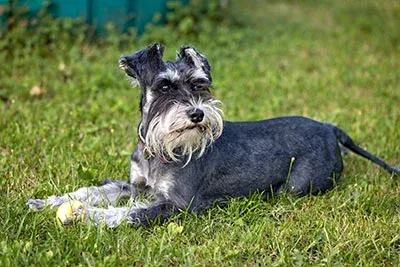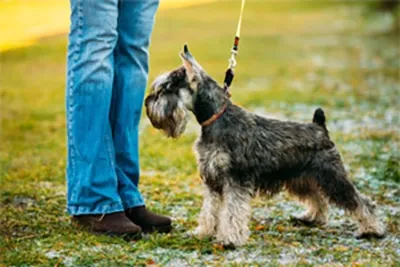Nearly Half Still Believe This Painful but Persistent Dog Myth — Do You?
Astonishingly, when researchers told participants that these dog pairs were siblings and asked them to explain the differences, 42% claimed the differences were due to genetic variations. Not this painful process inflicted on them by owners and breeders.

STORY AT-A-GLANCE
- Canadian researchers conducted a study of the general public’s awareness and perceptions of tail docking and ear cropping of dogs
- The researchers learned that a significant percentage of people seem to believe some dogs of certain breeds are simply born with cropped ears and docked tails
- They also learned that surgically altered dogs are perceived as more aggressive and dominant than dogs with their natural tails and ears
- Researchers believe many people turn a blind eye to what’s involved in tail docking and ear cropping because it makes them uncomfortable
- The biggest advocates of these medically unnecessary procedures in the U.S. are dog breeders and the American Kennel Club
Editor's Note: This article is a reprint. It was originally published November 02, 2016.
Recently, researchers in British Columbia conducted a study of people's awareness and perceptions around the practice of tail docking and ear cropping of dogs.1 Past studies have primarily involved dog breeders and veterinarians; however, this study was designed for the general public.
The study peaked my interested because, as writer Karen Brulliard points out in her article for the Washington Post:
"Dogs are born with ears and tails. They should get to keep them."2
I couldn't agree more. I've never performed these strictly cosmetic surgeries on any dog. I also refuse to do cat declaws or dog devocalization ("debarking") — two other medically unnecessary, "for human convenience only" procedures that are cruel and unquestionably inhumane.
Study Featured 4 Breeds That Are Often Tail-Docked and Ear-Cropped
Experiment 1 in the B.C. study involved 810 U.S. residents, including 474 men and 336 women with a mean age of 44. Of the 810 participants, 318 were a primary caregiver of a dog.
For the study, the researchers used images of four dog breeds — the Doberman Pinscher, Miniature Schnauzer, Boxer and Brussels Griffon. Dogs belonging to each of these breeds are routinely subjected to tail docking and ear cropping.
The participants were shown two pictures of one of the four breeds, one natural (with the tail and ears the dog was born with), and one with docked tail and cropped ears.


They were told the dog pairs were siblings, and asked to explain why they thought the ears and tails looked different.
Many Study Participants Claimed to Believe Dogs Are Born With Docked Tails and Cropped Ears
The researchers reported that 58% of participants correctly answered that the dogs with cropped ears and docked tails had been surgically altered after they were born. However, astonishingly, the other 42% claimed not to know that dogs are not born with docked tails and cropped ears.
These people believed the appearance of the shorter ears and tails was simply a genetic variation. They believed dogs of the same breed vary in appearance up to and including tails and ears of different shapes and sizes.


Not surprisingly, dog owners were more apt to answer correctly than non-owners.
Surgically Altered Dogs Are Perceived as More Aggressive, Dominant
Experiment 2 of the study involved 392 U.S. residents, including 241 men and 151 women with a mean age of 34. Of this second group, 149 were a primary caregiver of a dog.
In this experiment, the researchers wanted to learn if the physical appearance of the dogs caused the participants to make assumptions about their personality traits.


Participants in experiment 2 perceived the surgically altered dogs as more aggressive towards both people and other dogs — and more dominant — than the natural dogs. They perceived the natural dogs as more playful and more attractive.
Study Also Revealed How Owners of ‘Modified’ Dogs Are Perceived by Others
In a third experiment involving 420 U.S. residents, 235 men and 151 women with a mean age of 34 years, the researchers evaluated how owners of natural vs. surgically altered dogs are perceived.
Study participants viewed owners of surgically altered dogs as "more aggressive, more narcissistic, less playful, less talkative and less warm than owners of natural dogs."3 Interestingly, gender also played a role in these perceptions.
If the owner of an altered dog was female, she was perceived by the participants as being more aggressive, dominant, narcissistic and competent than the female owner of a natural dog. Male owners of surgically altered dogs were viewed as more narcissistic, less warm and less competent than male owners of natural dogs.


Study Co-Author Believes People ‘Just Don’t Want to Know’ the Details of Tail Docking & Ear Cropping
Marina A. G. von Keyserlingk, Ph.D., an animal welfare professor at the University of British Columbia and co-author of the study, told the Washington Post the study results suggest it simply doesn't occur to many people that the physical appearance of dogs may be the result of human decisions forced on them.
Co-author Katelyn Mills, a graduate student studying under von Keyserlingk, believes the lack of awareness could be deliberate. "People disconnect themselves from things if they find it uncomfortable," Mills said. "They don't want to know about it."4
"They're not particularly pleasant procedures to know about," says the Post's Brulliard. "Tail-docking is performed by veterinarians or breeders when puppies are [3] to [5] days old, either by cutting the tail with scissors or a scalpel or putting an elastic band around it that restricts circulation and makes it fall off. Anesthetic is rarely used.
Veterinarians usually, but not always, do ear-cropping on [7]- to 12-week-old puppies and use anesthetic. After cutting the ears into the owner's chosen shape (Dobermans might get a 'military crop' or a 'show crop'), the ears are held upright for months, at first in a styrofoam cup and then with tape, until they heal and stand on their own."5
Attention Dog Breeders and Kennel Clubs: It's Time to Denounce These Barbaric Procedures
Tail docking and ear cropping are banned in much of Europe and Australia. Unfortunately, the procedures continue to be routinely performed in the U.S. and Canada, despite the fact that the American and Canadian veterinary medical associations have taken a stand against them.
In the U.S., it is the American Kennel Club (AKC) and breeders that refuse to see the light. Many AKC breed standards call for docking and cropping, and any dog of those breeds that has been allowed to keep his ears and tail might as well not show up for AKC-affiliated events. He either won't be allowed to compete, or he'll have no chance of winning.
The arguments for ear cropping and tail docking don't hold up under scrutiny, especially since most dogs in the U.S. today live in family homes and aren't used for hunting or burrowing. These days, these painful procedures are done for one of three reasons: as a cosmetic "enhancement," for the sake of "tradition" or to make a dog look intimidating.
Tragically, as much as people love their dogs and view them as members of the family and best friends, at the same time, many also see them as material belongings that can be bought, sold, traded, ignored, mistreated, "surgically enhanced" or abandoned. Until that perspective changes among the general public, and certainly among breeders and kennel clubs, humans will continue to breed and surgically alter dogs for appearance, rather than preserving and protecting their natural design.











